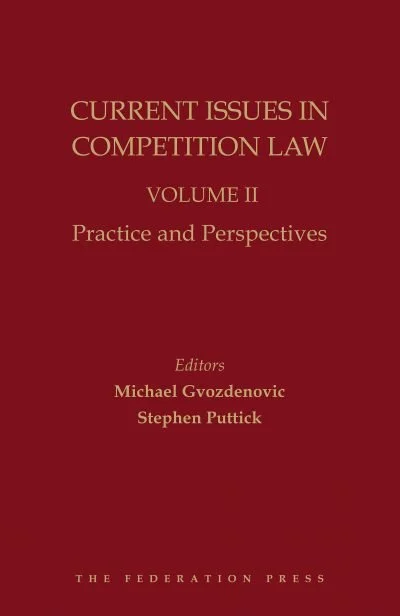Digital Platforms, Emerging Markets, and Section 46
Julie Clarke, ‘Digital Platforms, Emerging Markets, and Section 46' in Michael Gvozdenovic and Stephen Puttick (eds), Current Issues in Competition Law Volume II: Practice and Perspectives (Chapter 5)
Introduction
The rise of digital platforms in the past decade has sparked vigorous debate about the effectiveness of existing competition laws in the ‘new economy’. The digital platform giants now account for the majority of the world’s most valuable companies.[1] They include the ‘FAAMG’ companies — Facebook, Apple, Amazon, Microsoft, and Google (Alphabet)[2] — as well as Chinese technology giants, Tencent and Alibaba. It is therefore unsurprising that they continue to attract unprecedented public, political, and regulatory attention, prompting a raft of reviews and inquiries around the globe,[3] changes to regulatory regimes,[4] and a growing number of ‘mega-lawsuits’.[5]
Digital platforms present unique challenges for competition authorities, most acute where the platforms are conglomerate, multi-sided, vertically integrated, and exhibit network effects.[6] The complexities of market definition and competition assessment in such cases is readily apparent, especially where one side of the platform receives goods or services at zero financial cost.
This Chapter considers how Australia’s re-designed misuse of market power prohibition might tackle the challenges arising by the rise of digital platforms. The more fundamental question of whether law and policy should change to address the social concerns enlivened by the rise of digital platforms is largely left to be examined in other chapters within the collections.
Part II begins by identifying the characteristics of digital platforms which give rise to potential competition concerns. Part III then explains the current state of Australia’s misuse of market power law, before Part IV examines the types of platform conduct that might trigger enforcement action.
Publisher
Footnotes
[1] ‘Most Valuable Companies in the World – 2021’ FXSSI (Web Page, 6 February 2021) <https://fxssi.com/top-10-most-valuable-companies-in-the-world>.
[2] Also referred to as GAFAM. See further Radhiki Pujara, ‘Can Microsoft (MSFT) Help FAAMG Surpass FAANG in 2021?’ Nasdaq (Web Page, 18 December 2020) <https://www.nasdaq.com/articles/can-microsoft-msft-help-faamg-surpass-faang-in-2021-2020-12-18>.
[3] For example, Australian Competition and Consumer Commission, Digital Platforms Inquiry (Final Report, July 2019) (‘Digital Platforms Inquiry’); Jason Furman et al, Unlocking Digital Competition: Report of the Digital Competition Expert Panel (Final Report, March 2019) (‘Furman Report’); Jacques Crémer, Yves-Alexandre de Montjoye, and Heike Schweitzer, Competition Policy for the Digital Era: Final Report, (Final Report, May 2019) (‘Crémer Report’); Stigler Center for the Study of the Economy and the State, Stigler Committee on Digital Platforms (Final Report, 2019) (‘Stigler Report’); and United States House Judiciary Committee, Subcommittee on Antitrust, Commercial and Administrative Law, Investigation of Competition in Digital Markets (Majority Staff Report and Recommendations, 2020) (‘Subcommittee on Antitrust Report’). See also Sean F Ennis and Amelia Fletcher, ‘The Goldilocks Dilemma: When is Digital Regulation “Just Right”?’ (2020) 11 Journal of European Competition Law and Practice 551.
[4] For example, in Germany the ‘Act Amending the Act against Restraints of Competition for a focused, proactive and digital competition law 4.0 and amending other competition law provisions’ came into force on 19 January 2021, introducing a new s 19a designed to facilitate early intervention in cases where the actions of large digital companies threaten competition, including self-preferencing and denial of access. In Australia, regulatory changes relating to news media were introduced into Parliament in December 2020: see Treasury Laws Amendment (News Media and Digital Platforms Mandatory Bargaining Code) Act 2021 (Cth) (‘News Media Act’).
[5] Active cases at the time of writing included an action by the United States (‘US’) Department of Justice (‘DOJ’) and others against Google, an action by the State of Texas and others against Google, and action by the US Federal Trade Commission (‘FTC’) and others against Facebook. Fines running into billions of euros have been imposed in several European Commission cases involving digital platforms, most notably: Google Search (Shopping) (European Commission Decision, AT39740, 27 June 2017) (‘Google Search (Shopping)’), imposing a €2.42 billion fine. The case is currently on appeal: see Google and Alphabet v Commission (General Court of the European Union, Case T-612/17). See also Google Android (European Commission Decision, AT40099, 18 July 2018) (‘Google Android’), imposing a fine of €4.34 billion. The case is currently on appeal Google and Alphabet v Commission (General Court of the European Union, Case T-604/18).
[6] See Amelia Fletcher, ‘Digital Competition Policy: Are Ecosystems Different?’ (Note, Organisation for Economic Co-Operation and Development, 9 November 2020) 2. See also Organisation for Economic Co-Operation and Development, Abuse of Dominance in Digital Markets (2020) 2–3.
